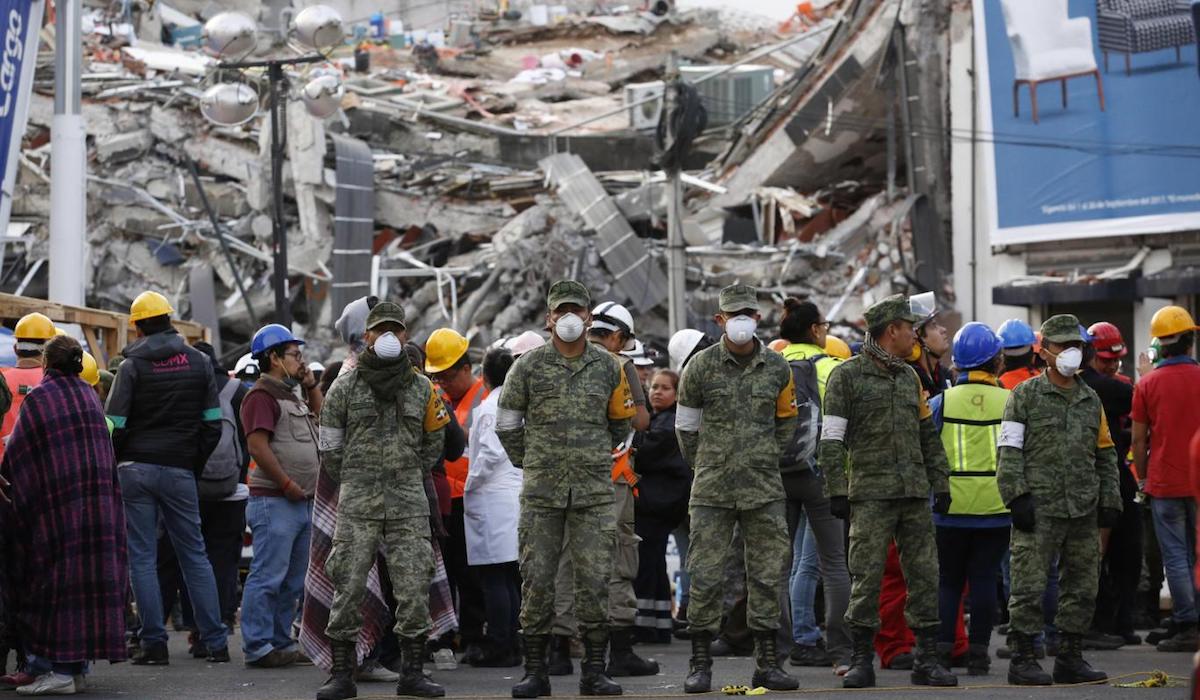With two recent deadly earthquakes in Mexico and seismic activity from California to Chile, the Colombian government and geological specialists have begun to openly discuss their concerns for Medellín, Colombia’s second largest city. The same fault line which runs through the west coast of Chile, the Nazca-Platte plate, also runs through western Colombia and has in the past been responsible for deadly earthquakes in the country.
Ana Beatriz Acevedo, a professor and researcher at EAFIT University, has been actively investigating seismic activity in the region. She categorizes Medellín as being at medium risk for an earthquake of at least 6 on the Richter scale within the coming decade, given the city’s proximity to the so-called “ring of fire”, a seismic zone which extends in a circle around the Pacific, including countries from America, Asia, and Oceania.
Acevedo added that more than half of Medellin would be at serious risk, considering that many houses were not build over solid rock.
“A large part of the city is built over non-rocky ground, which would make them more sensitive to the intensity of earthquakes”, she said.
Added to this, many buildings and houses that were built are not in compliance with seismic regulations for construction. Some of these buildings were built before the regulations were put into place, however most are not compliant because they were built by private companies in the city’s poorest neighborhoods, and construction workers did not have proper materials or used lower cost materials to save on cost.
“Our studies show that more than 50% of houses were built with unreinforced masonry. Their walls don’t have any steel nor any type of columns, and this is the part of the structure which supports loads. This is forbidden by regulations in areas with medium to high risk of earthquakes, such as in Medellín”, she said. She also specified that this type of construction is more prevalent in older homes.
Catalina Yepes, a civil engineer and researcher at Colombia’s Universidad Nacional with expertise in topics such as seisms and structures, also expressed concern. The lack of compliance of regulations in buildings increases the risk of collapse of the structures, and could occur even in earthquakes of less than 6.0 magnitude.
“Unreinforced masonry is prevalent in Antioquia and this makes the city vulnerable”, Yepes said. She said that Mexico should serve as a warning to the city to enforce compliance regulations before it’s too late.
Medellín experiences earthquakes nearly every day, according to Yepes, however they are sufficiently deep or far enough from the population that most people do not feel them.
“Colombia is in a complex seismic zone. Generally, these earthquakes are circular in motion”, she added. She said that the zone with the highest risk in Antioquia was the territory located around the tectonic faults of El Romeral, and at a national level, in Bucaramanga.
María del Pilar Restrepo, deputy director of the Metropolitan Area of Aburrá’s Valley (AMVA), the environmental authority in the region, said that a plan is being created with a strategy that involves short-term and medium-term actions to allow municipalities to move toward compliance. She said that they are also working on a response plan in the case of a seismic event.
“We’re performing technical studies on tectonic faults alongside with the Early Earthquake Alert System (SIATA) to prioritize prevention in residential areas that are most at risk because of their susceptible construction. A seismic event would affect the region with respect to mobility, connectivity, public services and more”, she said
Acevedo said that Cali, and not Medellín, is actually at the greatest risk due to the city’s close proximity to the Pacific Ocean. The municipalities of Valle del Cauca, Chocó, Nariño and Cauca are at risk of suffering earthquakes with intensities greater than 8.0 in magnitude. By contrast, the Caribbean coastal cities o, Barranquilla and Cartagena have the lowest risk.
“Almost 90% of the Colombian population lives in medium to high-risk zones, because half of the population resides in Antioquia, Valle del Cauca, Cundinamarca and Santander”, Acevedo said.





